- Good Sam Community
- Everything RV
- Technical Issues
- Re: My insulation theory, take a look.
- Subscribe to RSS Feed
- Mark Topic as New
- Mark Topic as Read
- Float this Topic for Current User
- Bookmark
- Subscribe
- Mute
- Printer Friendly Page
My insulation theory, take a look.
- Mark as New
- Bookmark
- Subscribe
- Mute
- Subscribe to RSS Feed
- Permalink
- Report Inappropriate Content
Apr-24-2016 05:10 PM
Please read this post completely before giving me your opinions, thanks!
I'm working on my very first DIY camper conversion, using a 2010 extended Ford E250.
At this moment the floor, upper wall and ceiling is insulated.
The lower walls, doors and wheel wells aren't insulated yet.
But before insulating the lower walls I wanted just wanted your opinion on this subject, I know it's been debated over the "correct" method to insulate a campervan.
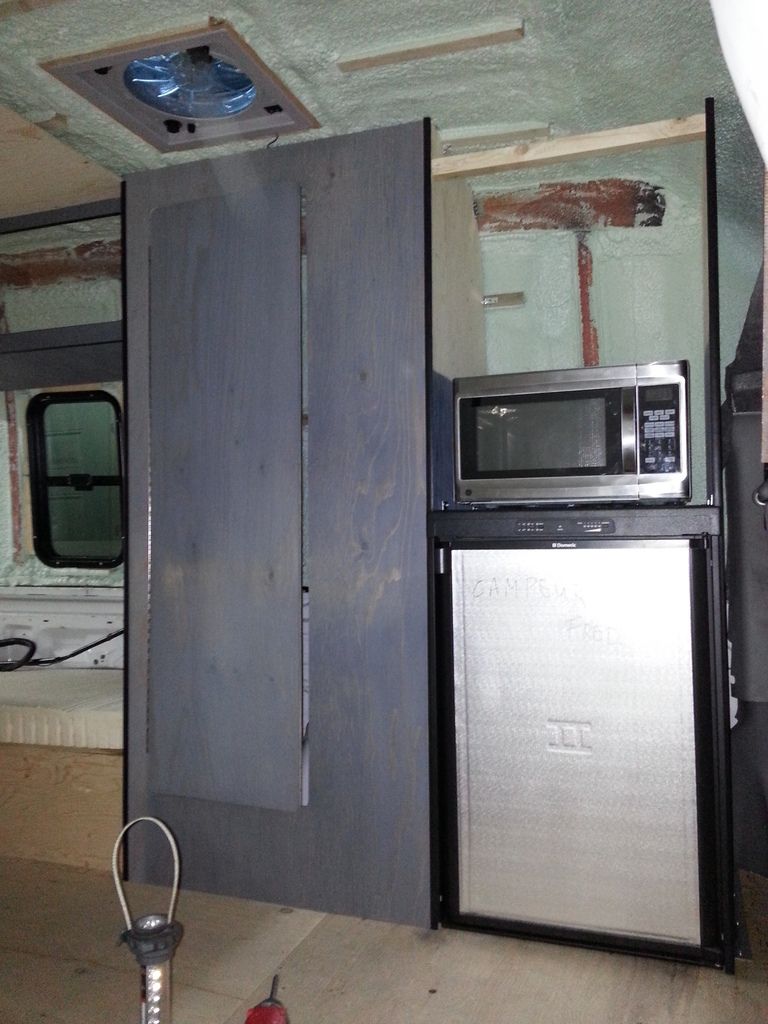
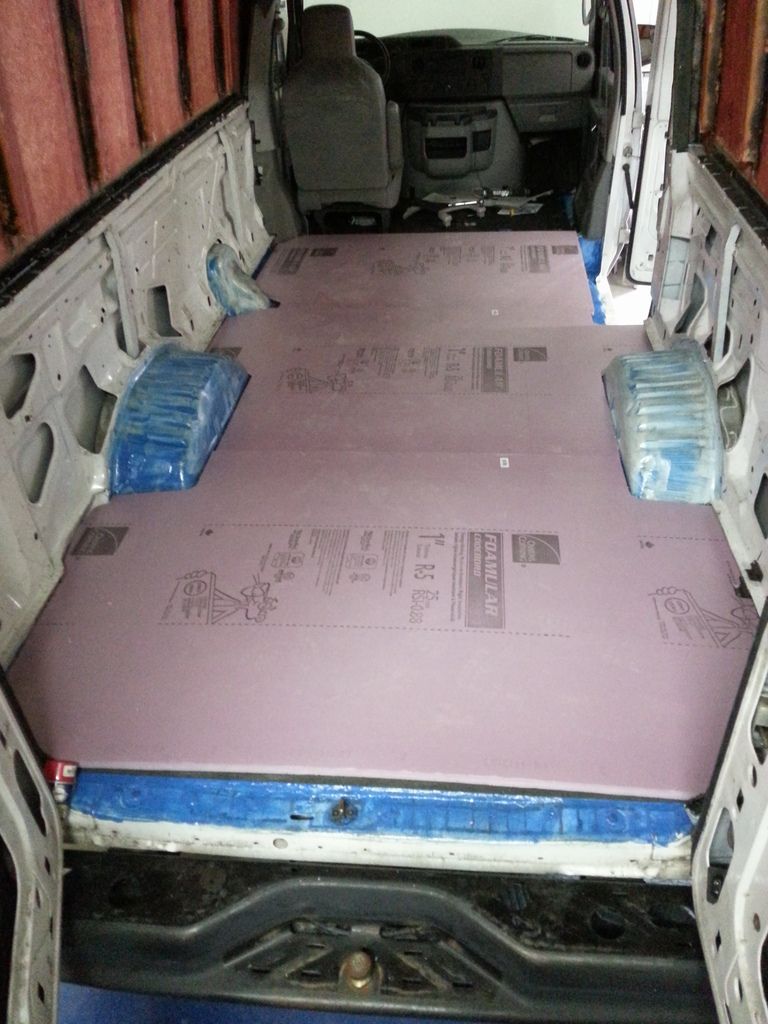
I'm an Architectural technician so I know a little bit about insulation but this is not a house, I don't believe in Reflectix (sorry I know a lot of you do) I don't even consider it to be insulation, it's basically a thermal bridge breaker, I'm not saying it doesn't work, I just don't want to use it.
Also I know there's a lot of people afraid of polyurethane foam, there's some talk of panel warping, I'm aware of that, from what I have learned there's 2 main reasons for that, the insulation company that did the upper walls and ceiling of my van told me that the temperature of the polyurethane coming out of the nozzle is something like well over 200 degrees and that's why the panels warp (from the heat).
The other reason is expansion, when the foam is trapped it won't stop expanding and will warp the panels.
I have red many many articles here and there on the net and I think that's what it comes down to.
So here's my theory, take a look at my drawing, it's a section of the outer wall and floor.
I plan on using a different and relatively new product : Sika post fix
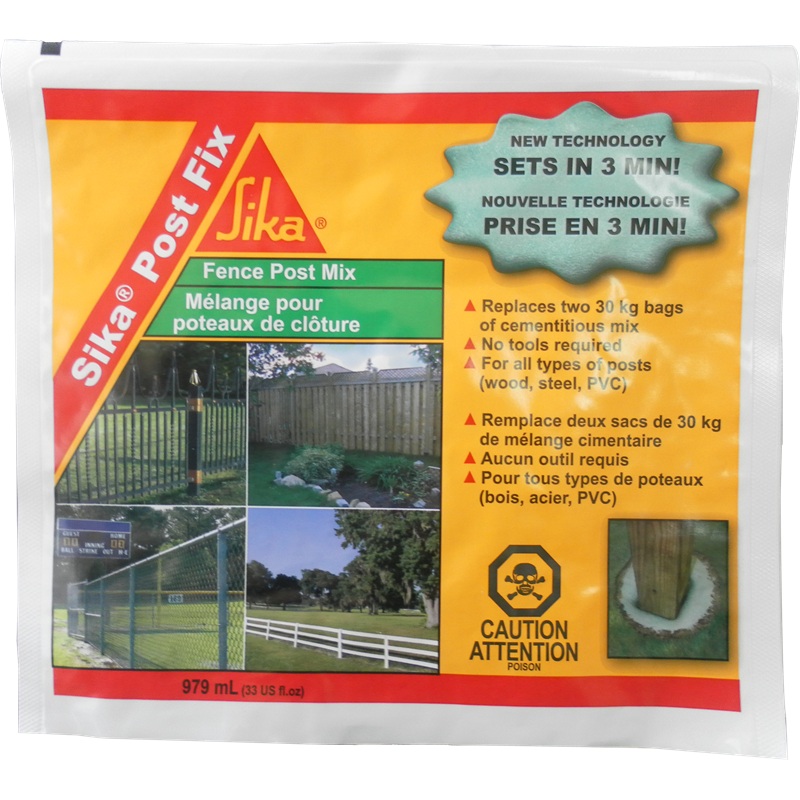
You can see it in action here :
https://www.youtube.com/watch?v=r9J2Rec2MjE
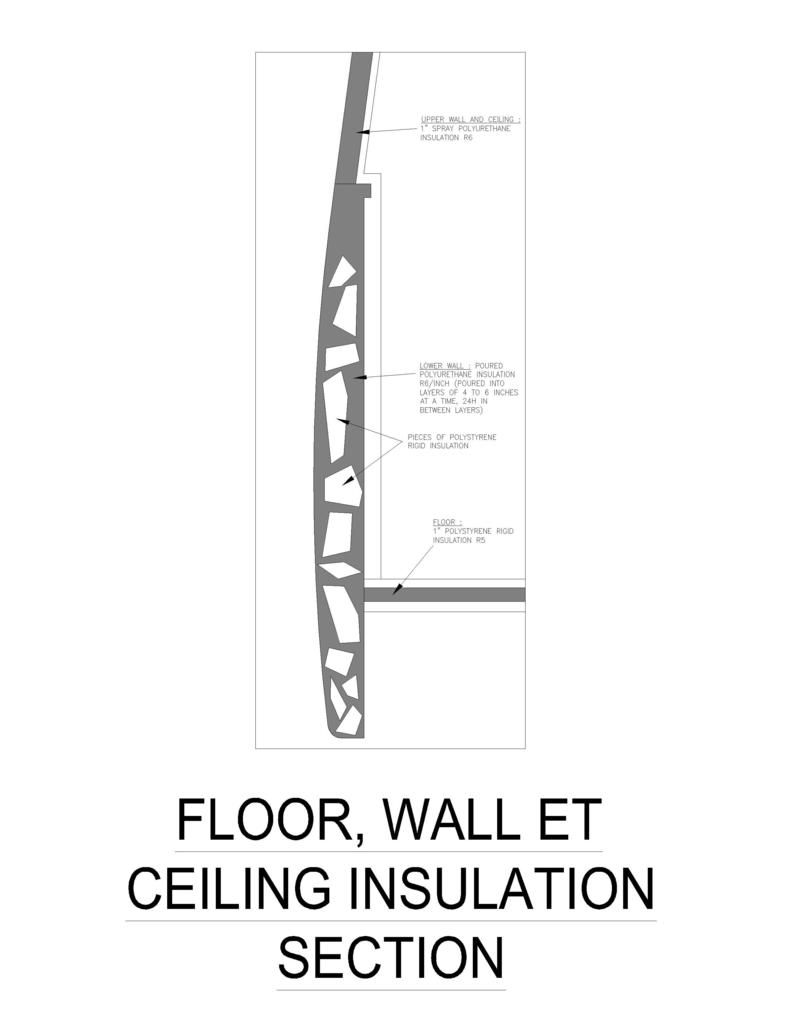
But the idea is to pour it in small layers of 4 to 6 inches (expanded) maximum at a time (that's my opinion) so the expansion would only be towards the top, So I would start pouring at one end making my way towards the other end, pouring it through the holes on the inside of the walls waiting 24h in between layers. Also I have a lot of scrap foam boards/pieces laying around, I would brake them up in small pieces and put them inside the panels, the expanding foam would fill the void in between the pieces, also I would need much less of that liquid post fix polyurethane.
So there's my theory... what do you think about it?
I'm actually waiting to do this because it's still pretty cold up here.
DIY conversion build, extended 2010 Ford 5.4L E250 + high top, from Montreal Canada, new to all this so please be patient and clear with me (never built or camped in a van yet)
- Mark as New
- Bookmark
- Subscribe
- Mute
- Subscribe to RSS Feed
- Permalink
- Report Inappropriate Content
Jun-05-2016 01:00 PM
Anyways I'll use cups next time so I don't over-pour the polyurethane in one spot.
DIY conversion build, extended 2010 Ford 5.4L E250 + high top, from Montreal Canada, new to all this so please be patient and clear with me (never built or camped in a van yet)
- Mark as New
- Bookmark
- Subscribe
- Mute
- Subscribe to RSS Feed
- Permalink
- Report Inappropriate Content
Jun-04-2016 10:46 PM
I poured the third bag almost completely in one spot (not on purpose) I just tilted the bag and it just came out too quickly and before I knew it it was almost empty. It happened probably at the worst spot, almost no space between the inner and outer panels.
I could feel the heat and see the foam pushing it's way into place really quickly. I dumped the little that was left on the wheel well and I went outside of the van to see if it was warping...
I couldn't see it but I felt the heat with my hand so I knew where the polyurethane was on the inside, then I started feeling the panel swelling on the outside 😞
Not much but I can feel it and it's my fault.
Next time I will remove both liquids without mixing them and store them into two separate bottles just like when you buy polyurethane. Those **** plastic bags are impossible to work with.
I had in mind to put less since the space between the panels was really narrow, it would never have happened if I was pouring it with a plastic cup or something I can see the liquid.
I still think this is the best way to insulate those walls (pouring polyurethane) but you have to use logic, more where you have space and less (thin layers) where it's tight.
DIY conversion build, extended 2010 Ford 5.4L E250 + high top, from Montreal Canada, new to all this so please be patient and clear with me (never built or camped in a van yet)
- Mark as New
- Bookmark
- Subscribe
- Mute
- Subscribe to RSS Feed
- Permalink
- Report Inappropriate Content
Jun-01-2016 04:30 PM
westend wrote:
Very cool! I've already thought of a couple different uses for this foam. Thanks for posting your progress!
be sure that the foam has some space to expand to and it's never trapped, I'm not sure how I will finish the top part? maybe low expansion foam from a can.
DIY conversion build, extended 2010 Ford 5.4L E250 + high top, from Montreal Canada, new to all this so please be patient and clear with me (never built or camped in a van yet)
- Mark as New
- Bookmark
- Subscribe
- Mute
- Subscribe to RSS Feed
- Permalink
- Report Inappropriate Content
Jun-01-2016 04:23 PM
I'm not even half way there and if I had to do it over again I would definitely buy polyurethane by the gallon, closed cell / 2 or 3lb
from a big name company like this one
http://www.uscomposites.com/foam.html
These pouches I'm using are polyurethane but it's hard to figure out what type/density etc...
When I'm done I'll see how many pouches I used so I can put a price on it. I'm pretty sure buying polyurethane by the gallon is a better deal, but we'll see.
DIY conversion build, extended 2010 Ford 5.4L E250 + high top, from Montreal Canada, new to all this so please be patient and clear with me (never built or camped in a van yet)
- Mark as New
- Bookmark
- Subscribe
- Mute
- Subscribe to RSS Feed
- Permalink
- Report Inappropriate Content
Jun-01-2016 04:06 PM
'71 Starcraft Wanderstar -- The Cowboy/Hilton
- Mark as New
- Bookmark
- Subscribe
- Mute
- Subscribe to RSS Feed
- Permalink
- Report Inappropriate Content
Jun-01-2016 01:31 PM
evy wrote:Chris Bryant wrote:
Do you have a scrap you can cut open to see the cell structure?
If I don't forget I will try to take a picture next bag I pour, I just cut a piece and zoom in?
Yeah, I'm just interested in how big the cells are.
- Mark as New
- Bookmark
- Subscribe
- Mute
- Subscribe to RSS Feed
- Permalink
- Report Inappropriate Content
Jun-01-2016 01:22 PM
Chris Bryant wrote:
Do you have a scrap you can cut open to see the cell structure?
If I don't forget I will try to take a picture next bag I pour, I just cut a piece and zoom in?
DIY conversion build, extended 2010 Ford 5.4L E250 + high top, from Montreal Canada, new to all this so please be patient and clear with me (never built or camped in a van yet)
- Mark as New
- Bookmark
- Subscribe
- Mute
- Subscribe to RSS Feed
- Permalink
- Report Inappropriate Content
Jun-01-2016 01:11 PM
- Mark as New
- Bookmark
- Subscribe
- Mute
- Subscribe to RSS Feed
- Permalink
- Report Inappropriate Content
Jun-01-2016 11:52 AM
After emptying the bag I roll it tightly and squeeze out what's left on the wheel well.
I had to cut holes to fill some part of the inner walls and add an improvised cardboard spout.
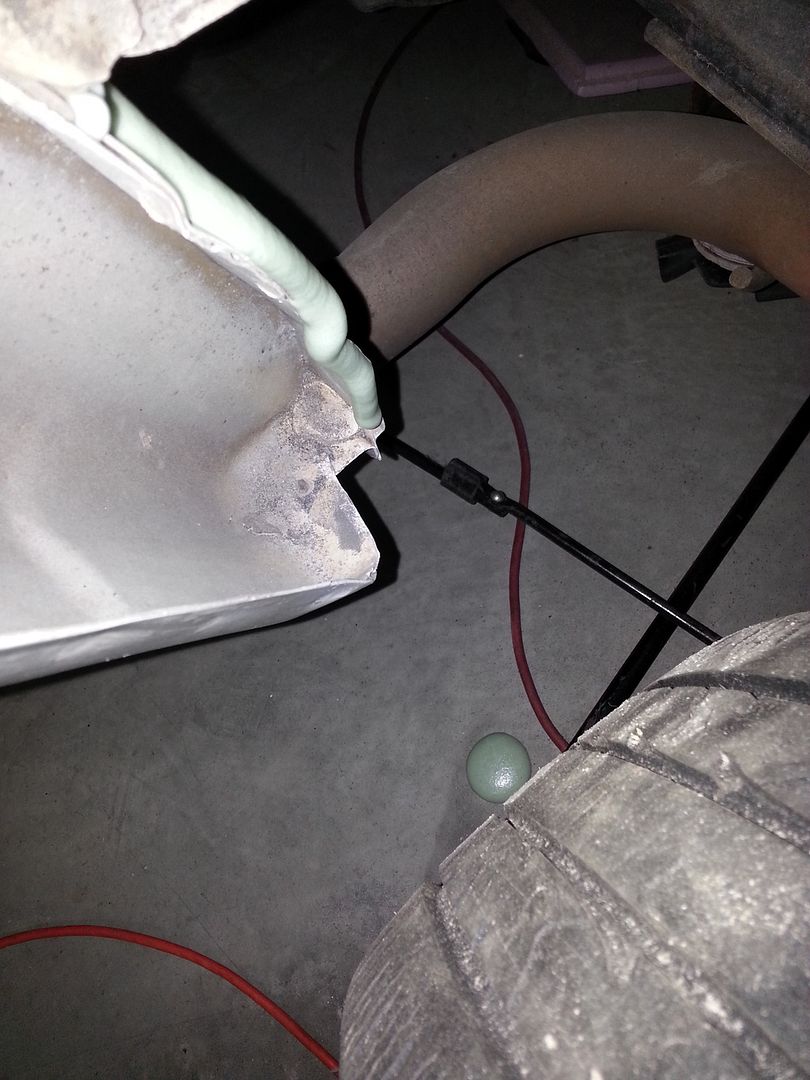
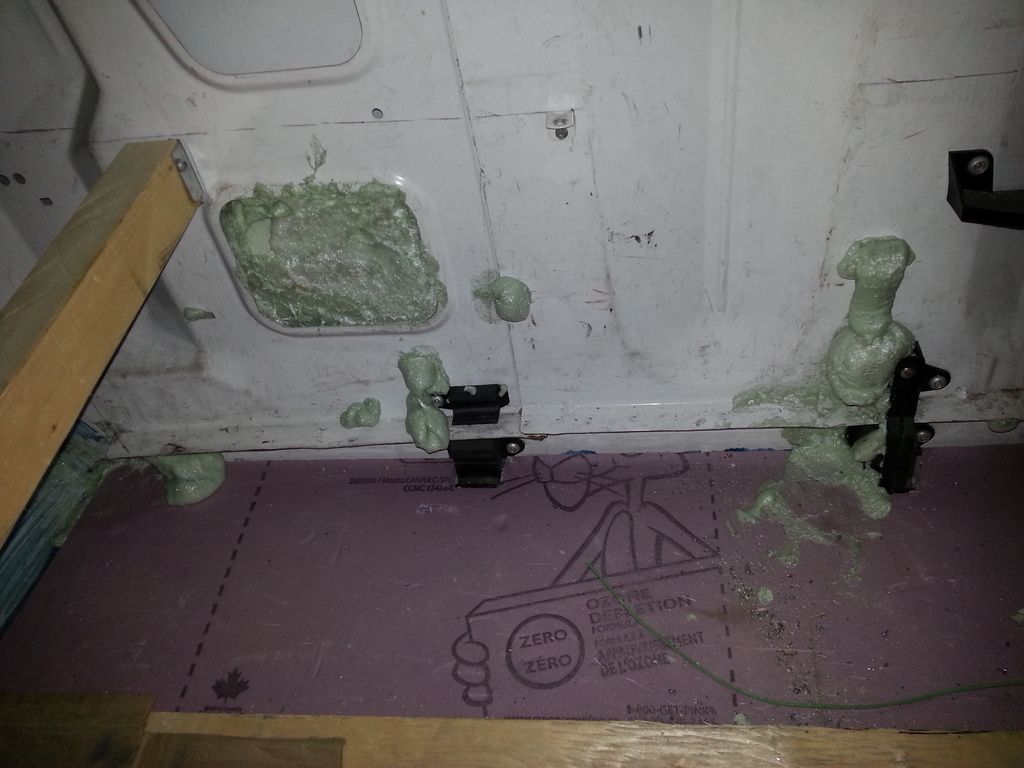

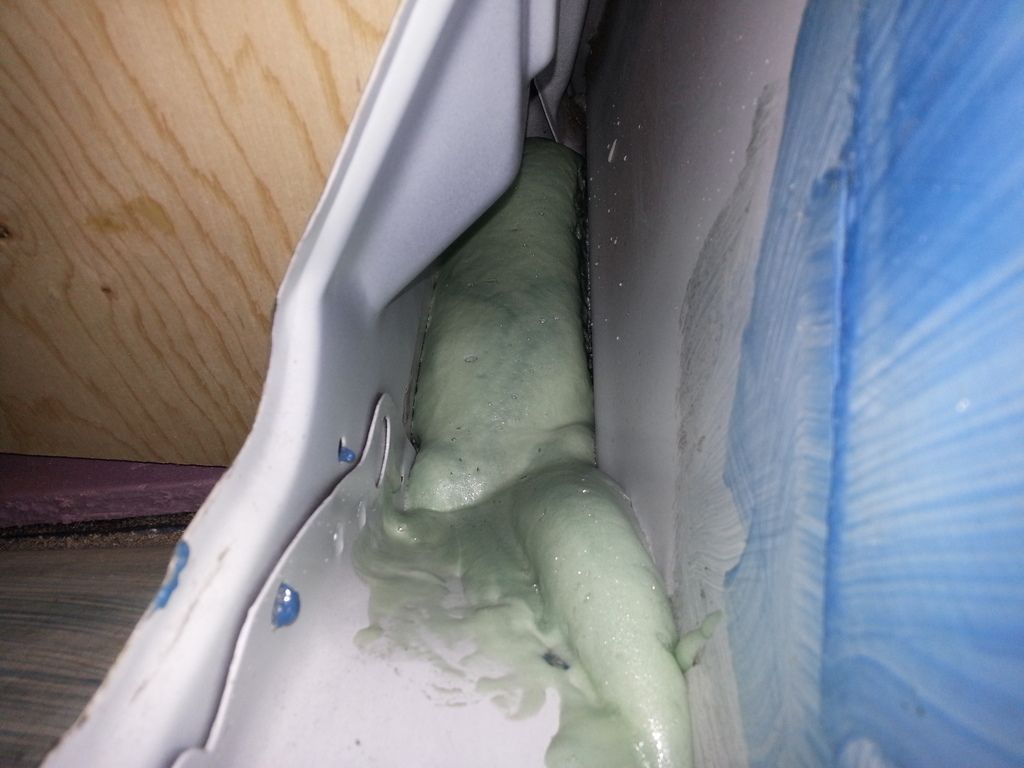
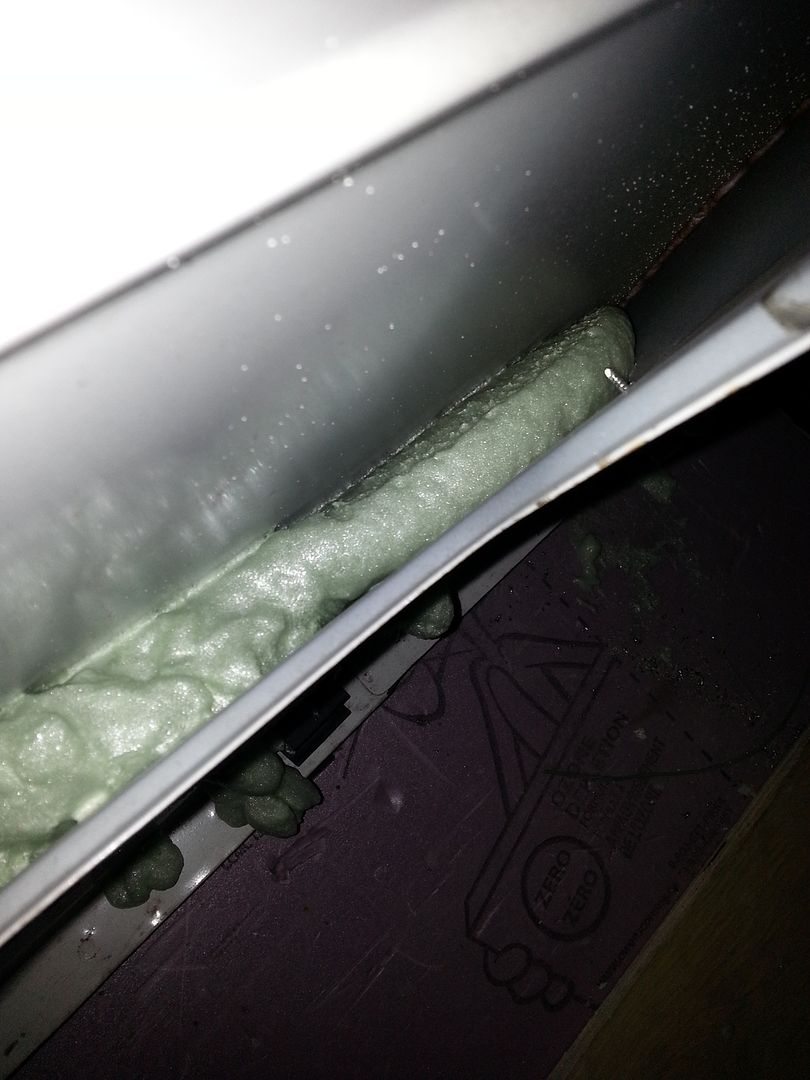
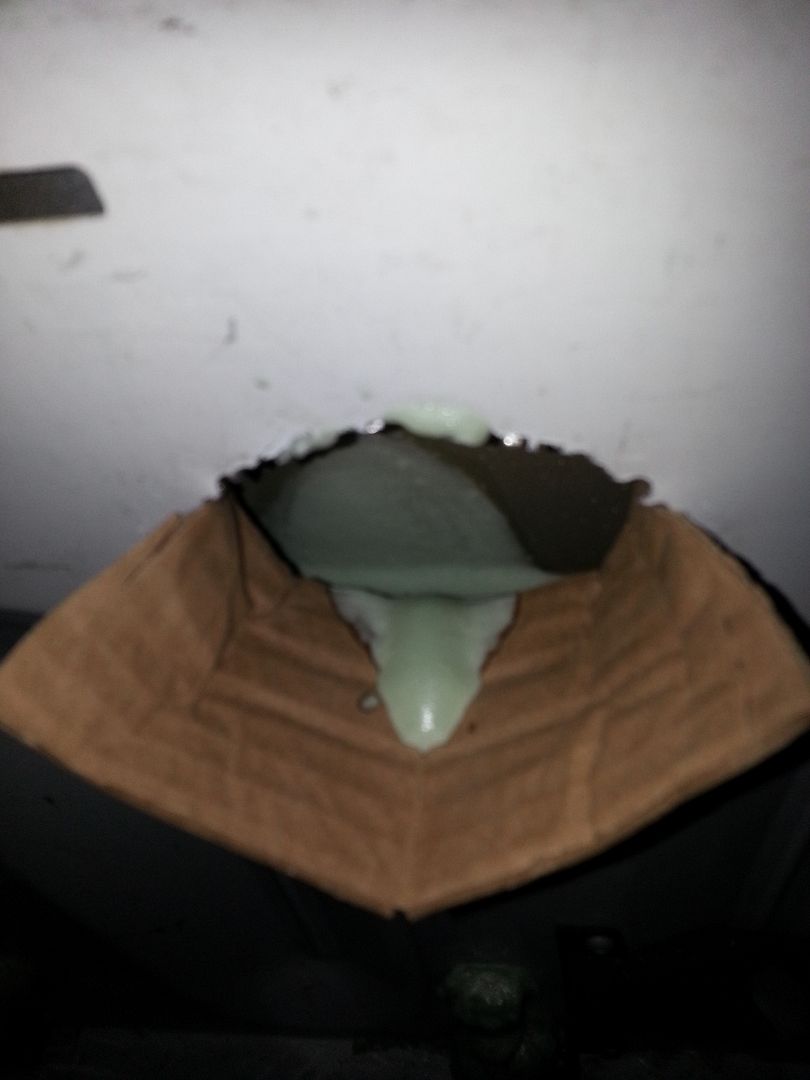
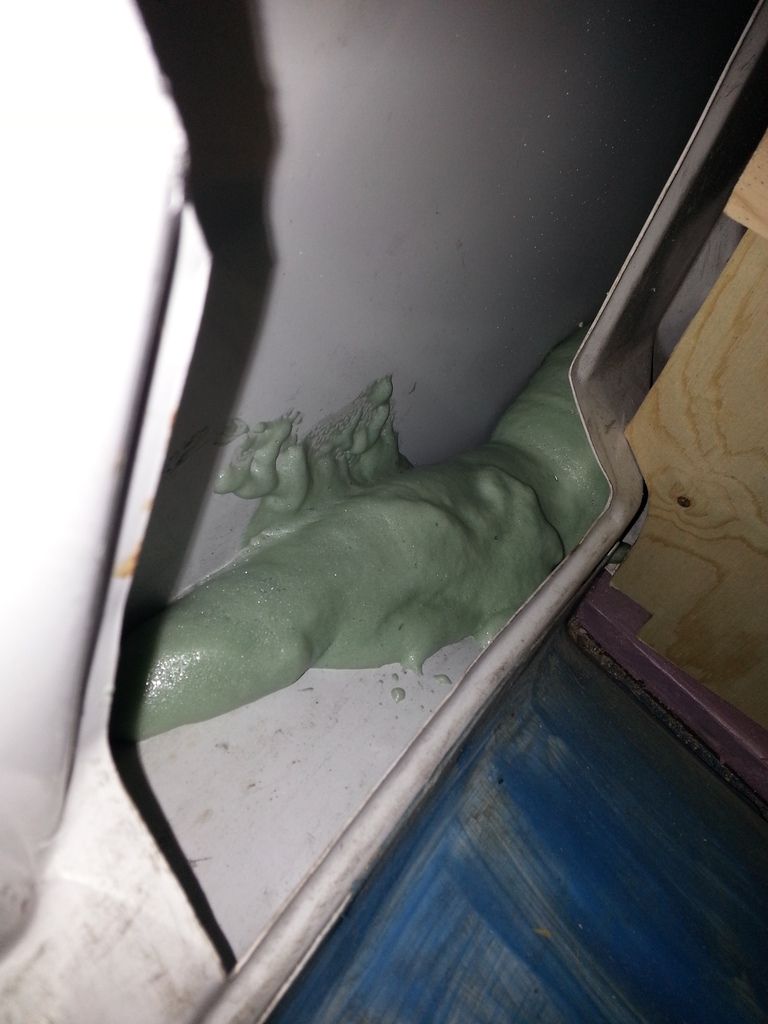
DIY conversion build, extended 2010 Ford 5.4L E250 + high top, from Montreal Canada, new to all this so please be patient and clear with me (never built or camped in a van yet)
- Mark as New
- Bookmark
- Subscribe
- Mute
- Subscribe to RSS Feed
- Permalink
- Report Inappropriate Content
May-31-2016 11:38 AM
This time I did it only in three spots (on the passenger side only)
https://youtu.be/tsky4z-b7ns
The outside panel of the van has not warped at all, that's a relief.
I will pour some more tonight.
DIY conversion build, extended 2010 Ford 5.4L E250 + high top, from Montreal Canada, new to all this so please be patient and clear with me (never built or camped in a van yet)
- Mark as New
- Bookmark
- Subscribe
- Mute
- Subscribe to RSS Feed
- Permalink
- Report Inappropriate Content
May-31-2016 05:33 AM
smkettner wrote:
I was more thinking you could have done one spot per bag.
Less stress to get the pour done before the expansion starts.
Really? You think I could pour it in one spot? I'm a bit worried it would stop expanding towards the top after a while and expand towards the sides maybe?
And from the heat generated by that polyurethane expanding the outside panel gets really hot and probably loses it stiffness? I don't think I'm game lol.
Maybe two spots?
DIY conversion build, extended 2010 Ford 5.4L E250 + high top, from Montreal Canada, new to all this so please be patient and clear with me (never built or camped in a van yet)
- Mark as New
- Bookmark
- Subscribe
- Mute
- Subscribe to RSS Feed
- Permalink
- Report Inappropriate Content
May-30-2016 09:07 PM
evy wrote:I was more thinking you could have done one spot per bag.smkettner wrote:Actually I did those three spots with only one bag in that second video.
After seeing the videos looks like you could have done one or two spots with the bag. Easy to cut away excess after it cools and hardens a bit.
Less stress to get the pour done before the expansion starts.
- Mark as New
- Bookmark
- Subscribe
- Mute
- Subscribe to RSS Feed
- Permalink
- Report Inappropriate Content
May-30-2016 08:51 PM
Gjac wrote:
You have a good approach to your project. The heat you feel is an exothermic reaction, all two part resins do this as they cross link or polymerize the way to reduce the heat is to spread the mix thin or make multiple mixes with less volume. I used to use 4 and 8 lb poly foam in work and mix it and pour a few oz in a paper cup and you can see what kind if expansion you will get. If you contain it and put too much into a closed mold you will increase the density and sometimes warp the mold. With all the large openings I would not worry about excessive expansion because you can tape the openings to contain the foam and cut the excess off with a sharp knife or razor if you use the lighter density foams 2-4 lbs, the heavier densities 8-16lbs or higher would require a saw because the get hard. You can also mix macro balloons into the foam to increase its insulating properties and reduce the volume of foam which would reduce the heat. Hope this helps and good luck with your project.
Since the polyurethane I'm mixing is meant for something other than insulating I don't have the specs for the density 😕
If you read my first posts in this thread I was thinking of inserting small pieces of rigid insulation and putting them in the inner walls before pouring the polyurethane but then I was worried that it could block the flow of the polyurethane when pouring so I decided that if I added some pieces I would add them immediately after pouring it.
The last thing I want is air pockets.
DIY conversion build, extended 2010 Ford 5.4L E250 + high top, from Montreal Canada, new to all this so please be patient and clear with me (never built or camped in a van yet)
- Mark as New
- Bookmark
- Subscribe
- Mute
- Subscribe to RSS Feed
- Permalink
- Report Inappropriate Content
May-30-2016 08:43 PM
smkettner wrote:
After seeing the videos looks like you could have done one or two spots with the bag. Easy to cut away excess after it cools and hardens a bit.
Actually I did those three spots with only one bag in that second video.
DIY conversion build, extended 2010 Ford 5.4L E250 + high top, from Montreal Canada, new to all this so please be patient and clear with me (never built or camped in a van yet)





